Nucs in the bee shed
Slow-mo of bees returning to a nucleus colony in the bee shed …
The bee shed is designed to accommodate a maximum of four National hives along one wall of its twelve foot length. However, space remains at the outermost ends of the stands sufficient to house a couple of nucs, so I made the necessary modifications and installed a nuc recently. They’re a bit squeezed into the corners but there’s still enough space to inspect them. Since there’s almost no time during the year when there aren’t nucs in use these spaces will be well used, and the shelter offered by the bee shed will provide additional protection when overwintering smaller colonies.
Almost all my nucs are of the Everynuc design sold by Thorne’s. With a little modification these Langstroth-sized poly nucs are excellent, though the entrance is far bigger than it needs to be. These nucs have an integral feeder, a separate floor and Varroa tray, a thin polycarbonate inner cover (it’s a bit grand calling it a crownboard) and a good thick roof. Importantly, as far as fitting them into the bee shed, they have a projecting ‘landing board’, which I found could be pushed flush with the wall of the shed so negating the need for an entrance tunnel of any kind. The remaining gap between the nuc body and the shed wall can be filled with a small block of dense foam.
To make sealing the colony easier or to add a queen excluder or single bee-width entrance I bodged together some scrap wood to make a simple holder – fitted onto the inside wall of the shed – into which suitably sized pieces of Correx or QE could be slotted. In the picture (bottom right) the Correx is out of sight behind the nuc but this nuc is ‘overheight’ because it has a Miller-type feeder on. Finally, to ensure the nuc couldn’t be accidentally moved during inspections or when I was pottering around in the shed, I added a couple of tie-down points on the walls and so could run a lightweight strap around the floor of the nuc, securing everything in place.
Late on Easter Sunday I visited my out apiary, sealed the nuc entrance with foam and transported it to the apiary with the bee shed – these sites are several miles apart, so there was no issues with the bees returning to the wrong place. The colony was busy dealing with a block of fondant in the feeder compartment. After moving them to the shed I left them to settle for ~20 minutes then gently removed the entrance foam and gave them a small waft of smoke. I then carefully placed the nuc in situ. Not a single bee escaped. Why can’t it always be this simple?
The following morning there were a few bees taking tentative first flights from the simple hole I’d bored through the wall of the shed. I’ve also built them a Correx (no surprises there for regular visitors to this site) landing board, both to help them land – rather than clinging to the shiny paint finish of the shed – and to help them orientate to the entrance. As you can see from the video (top of page), they largely ignore the landing board. The bee shed hive entrances have a variety of coloured landing boards to try and discourage bees from drifting between colonies … but it’s nothing like as distinctively (or artfully) decorated as some of the bee houses on the continent.
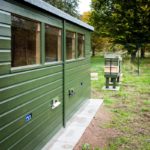
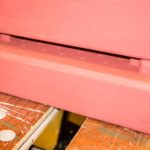
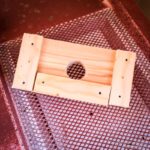
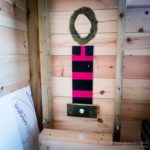
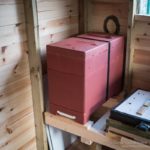
Join the discussion ...